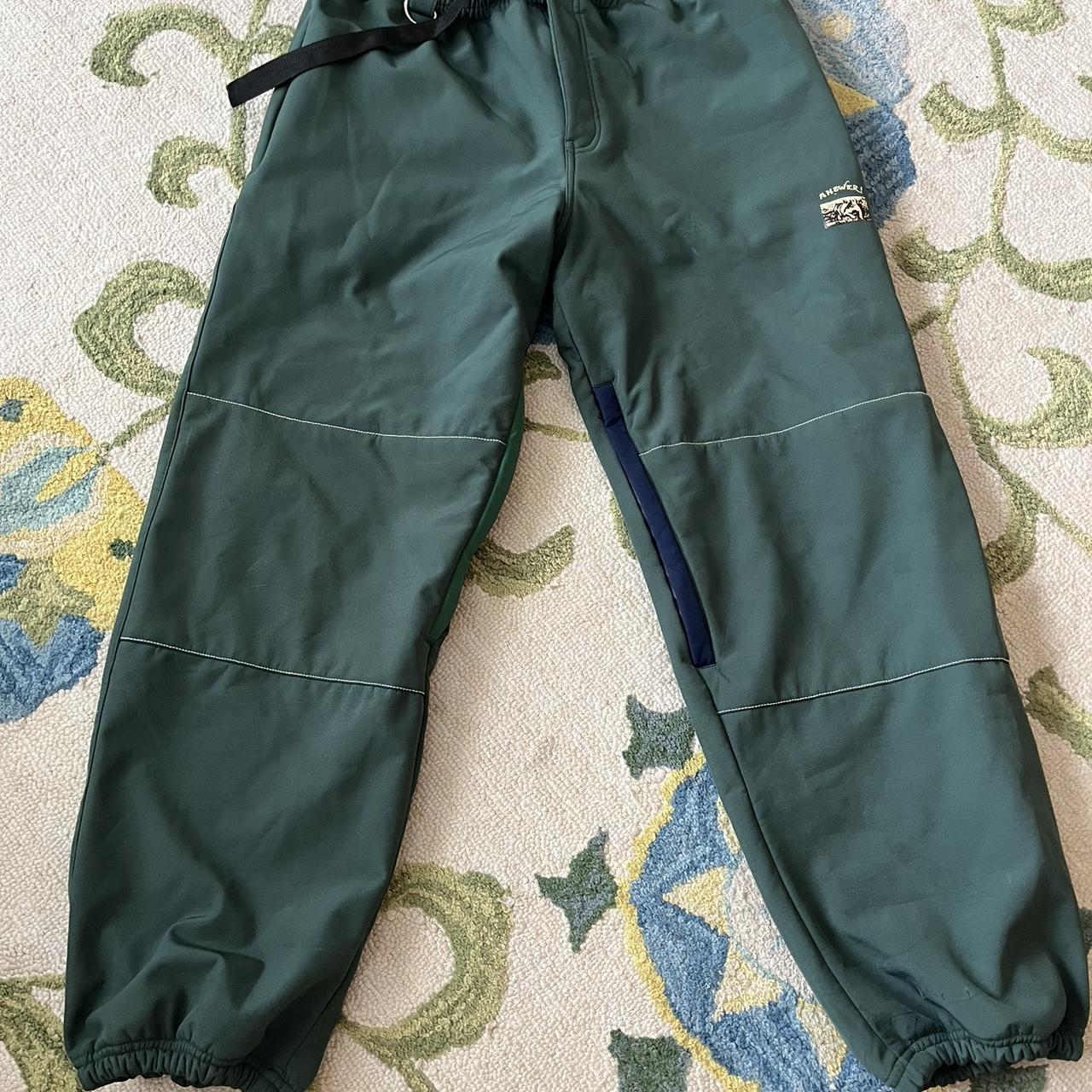Let me tell you something, folks—arsenic pants are not just your everyday fashion trend. They’re a deep dive into history, culture, and even science. If you’ve ever wondered why these trousers have such a notorious reputation, you’re in the right place. Today, we’re going to break down everything you need to know about arsenic pants, from their origins to their impact on society.
You might be thinking, "What’s so special about pants? Aren’t they just, well, pants?" But hold on a sec, because arsenic pants are far from ordinary. These garments carry a fascinating story that spans centuries, and trust me, it’s worth your time. So, grab a cup of coffee, and let’s get into it.
Now, I know what you’re thinking. Arsenic? Isn’t that the stuff they use in murder mysteries? Well, you’re absolutely right. And that’s exactly why arsenic pants are so intriguing. This is not just about fashion—it’s about history, science, and human behavior all rolled into one. Let’s dig deeper, shall we?
Read also:Velma And Daphne A Timeless Duo In Pop Culture
What Are Arsenic Pants?
First things first, let’s talk about what arsenic pants actually are. Simply put, arsenic pants were trousers dyed with arsenic-based pigments. These pigments, particularly shades of green, were super popular in the 19th century. But here’s the kicker—they were also deadly. Yep, you read that right. Deadly.
Back in the day, people didn’t realize how toxic arsenic was. So, they went ahead and used it to dye everything from dresses to wallpapers. And yes, that included pants. The vibrant green color was all the rage, and no one stopped to think about the consequences. It wasn’t until much later that the true dangers of arsenic exposure came to light.
So, why did people love arsenic pants so much? Well, it all comes down to aesthetics. The green was unlike anything else on the market at the time. It was bold, striking, and just plain cool. Who wouldn’t want to rock a pair of pants that stood out in a crowd? But as we’ll see, the price of fashion can sometimes be too high.
History of Arsenic Pants
The history of arsenic pants is as fascinating as it is tragic. It all started in the early 1800s when a new pigment called "Scheele’s Green" hit the market. This pigment was made using arsenic trioxide, and it quickly became a favorite among designers and consumers alike. Before long, arsenic-based dyes were being used in everything from clothing to home decor.
But as the decades rolled on, people began to notice something strange. Workers in dye factories were getting sick. Women wearing arsenic-dyed dresses were fainting. And children playing with arsenic-laden toys were falling ill. Slowly but surely, the truth about arsenic’s toxicity came to light. By the late 1800s, the use of arsenic in dyes was largely phased out, but the damage had already been done.
So, what can we learn from the history of arsenic pants? For one, it’s a stark reminder of how far we’ve come in terms of health and safety regulations. Back then, there were no laws to protect workers or consumers from dangerous substances. Today, we have much stricter guidelines, and that’s a good thing.
Read also:Lisa Booth The Rising Star In The Spotlight
Why Was Arsenic Used in Dyes?
You might be wondering why anyone would use something as toxic as arsenic in dyes. The answer lies in chemistry. Arsenic-based pigments produced colors that were incredibly vibrant and long-lasting. At the time, there weren’t many alternatives that could match the intensity of arsenic greens. Plus, arsenic was relatively cheap and easy to obtain, which made it even more appealing to manufacturers.
But here’s the thing: just because something works well doesn’t mean it’s safe. As we now know, arsenic is a potent poison that can cause serious health problems, including cancer, organ failure, and even death. It’s a sobering reminder that we need to be careful about the materials we use in everyday products.
Health Risks Associated with Arsenic Pants
Now, let’s talk about the health risks of arsenic pants. As you might imagine, wearing clothing dyed with arsenic wasn’t exactly good for you. The arsenic could rub off on your skin, especially if the fabric got wet or sweaty. Over time, this exposure could lead to a range of health problems, including skin irritation, respiratory issues, and even poisoning.
But it wasn’t just the wearers who were at risk. Factory workers who handled arsenic dyes were exposed to even higher levels of the toxin. Many of them suffered from chronic illnesses and premature deaths as a result. It’s a tragic chapter in the history of fashion, and one that serves as a cautionary tale for future generations.
So, what can we do to protect ourselves from harmful substances in our clothing today? For starters, we can look for products that are certified as safe and non-toxic. We can also support companies that prioritize sustainability and ethical practices. It’s all about being informed and making smart choices.
The Cultural Impact of Arsenic Pants
Despite their dangers, arsenic pants had a significant cultural impact. They were a symbol of wealth and status, and they represented the cutting edge of fashion at the time. People were willing to take risks for the sake of looking good, and in many ways, that hasn’t changed much today.
But the legacy of arsenic pants extends beyond fashion. They also serve as a reminder of the importance of science and research in everyday life. If people had known more about the dangers of arsenic back then, countless lives could have been saved. It’s a lesson that still resonates today, as we continue to grapple with issues like climate change, pollution, and public health.
How Arsenic Pants Shaped Modern Fashion
Believe it or not, arsenic pants played a role in shaping modern fashion. They highlighted the need for safer materials and better regulations, which ultimately led to the development of synthetic dyes and other innovations. Today, we have access to a wide range of safe and sustainable materials, all thanks to the lessons learned from arsenic pants.
Of course, there’s still work to be done. The fashion industry is one of the largest polluters in the world, and many of the materials we use today are far from perfect. But by learning from the past, we can create a brighter, more sustainable future for everyone.
Scientific Insights into Arsenic Toxicity
Now, let’s dive into the science behind arsenic toxicity. Arsenic is a naturally occurring element that can be found in soil, water, and air. When ingested or inhaled, it can cause a range of health problems, including:
- Cancer
- Respiratory issues
- Cardiovascular disease
- Neurological damage
So, how does arsenic actually harm the body? Well, it interferes with cellular function, leading to the buildup of free radicals and oxidative stress. Over time, this can damage DNA and other vital molecules, increasing the risk of disease.
It’s worth noting that not all forms of arsenic are equally toxic. Organic arsenic, which is found in seafood, is much less harmful than inorganic arsenic, which is the kind used in dyes and pesticides. Still, it’s important to be cautious about exposure to any form of arsenic, especially in high concentrations.
Modern-Day Arsenic Exposure
You might think that arsenic exposure is a thing of the past, but think again. Even today, people can be exposed to arsenic through contaminated water, food, and soil. In some parts of the world, arsenic levels in drinking water are dangerously high, putting millions of people at risk.
So, what can we do to protect ourselves? For starters, we can advocate for better environmental regulations and support efforts to clean up contaminated areas. We can also be mindful of the products we use and the foods we eat, choosing options that are safe and sustainable.
Legal and Ethical Implications
The story of arsenic pants raises important questions about legal and ethical responsibility. Who is accountable when people are harmed by dangerous products? Should manufacturers be held liable for the consequences of their actions? These are questions that continue to be debated today.
In the case of arsenic pants, there was very little regulation or oversight. Manufacturers were free to use whatever materials they wanted, regardless of the risks. It wasn’t until public outcry and scientific research that things began to change. Today, we have much stricter laws governing the use of toxic substances, but there’s always room for improvement.
Ultimately, the lesson here is that we all have a role to play in creating a safer, more ethical world. Whether you’re a consumer, a manufacturer, or a policymaker, your actions matter. By working together, we can ensure that history doesn’t repeat itself.
Consumer Responsibility
As consumers, we have a responsibility to be informed and make smart choices. That means doing our research, reading labels, and supporting companies that prioritize safety and sustainability. It’s not always easy, but it’s a small price to pay for peace of mind.
Of course, it’s not just about personal responsibility. We also need to hold companies and governments accountable for their actions. That means speaking out when we see unethical behavior and supporting policies that protect public health and the environment.
Conclusion
So, there you have it—arsenic pants in all their toxic glory. They may not be the kind of fashion statement you’d want to make today, but they’re a fascinating piece of history that teaches us valuable lessons about science, ethics, and responsibility.
As we’ve seen, the dangers of arsenic pants were real and far-reaching. But they also paved the way for important advances in science and regulation. Today, we have the tools and knowledge to create safer, more sustainable products, and it’s up to all of us to use them wisely.
So, what’s next? Well, I encourage you to share this article with your friends and family. The more people know about the history of arsenic pants, the better equipped we’ll be to avoid similar mistakes in the future. And who knows? Maybe you’ll even learn something new along the way.
Table of Contents
- What Are Arsenic Pants?
- History of Arsenic Pants
- Health Risks Associated with Arsenic Pants
- The Cultural Impact of Arsenic Pants
- Scientific Insights into Arsenic Toxicity
- Legal and Ethical Implications
Thanks for reading, folks. Until next time, stay curious and keep learning!


